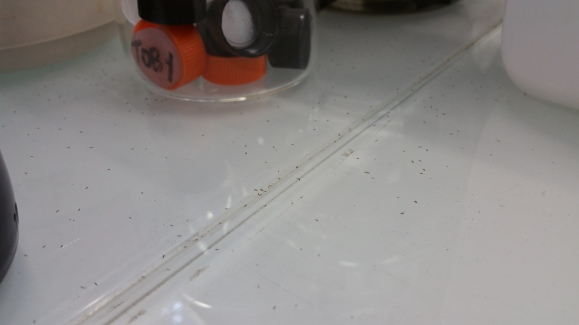The carrot, in all of its ordinariness, must be my favourite vegetable. I love its fresh crispiness when uncooked, and its sweet juiciness when cooked. Despite its unassuming looks and ubiquitous presence in our supermarkets, the composition of a carrot is anything but simple. Nature has this wonderful way of taking bushels of molecules, stirring them up and then spitting out something so perfect and whole as a carrot. As scientists, we struggle a little to take that apart to identify all the small constituents of this complex aggregate — especially since it isn’t as simple as pulling out one molecule at a time to identify it. This difficulty of analysis is true for almost anything that is found “naturally” in the world — that is, over the formation of which we have no direct control. Further, even if thorough analysis was possible, making sweeping conclusions about all carrots based on the analysis of a single carrot would simply not be possible, since nature loves variation. With this in mind, I will still give a fair run-down of the important components of my beloved, ordinary vegetable, the carrot.
A carrot is composed of — like many fruits, vegetables and living organisms in general — primarily water. This ubiquitous, tiny molecule makes up about 85% of the carrot. Slightly less than 10% is made up of carbohydrates — or, between friends, “carbs.” For the uninitiated, carbohydrates are a class of molecules that consist of carbon, hydrogen and oxygen. In its most basic form, the formula of a carbohydrate is one carbon atom per one water molecule. This is where the term carbohydrate comes from: they are the “hydrates (i.e. water) of carbon.” Carbohydrates come in the “simple” variety of glucose, sucroce and fructose, as well as complex carbohydrates, which are natural macromolecules: large molecules consisting of several repeating units.
The next 1-2% of a carrot is composed of “dietary fibre.” This rather vague term refers to some carbohydrates that are not easily digestible, unlike the carbohydrates mentioned above. An example of such a carbohydrate is cellulose, which is the primary structural component of many plants. Cellulose is the main dietary fibre present in carrots.
Approximately 1% of a carrot is composed of proteins, another type of natural macromolecule. Proteins are huge, extremely complex molecules made of an array of repeating units called amino acids. Similarly to carbohydrates, they are also made up of carbon, hydrogen and oxygen — where they differ from carbohydrates is the added presence of nitrogen.

A simplified view of a protein. The molecule is so large the chemical structure cannot easily be drawn. Image source: http://www.topsan.org/
0.5% of a carrot is made up of fat, a third kind of natural macromolecule. Alike proteins and carbohydrates, fats are made mostly from carbon, hydrogen and oxygen. The repeating unit in a fat is called a fatty acid.
An additional 1% is accounted for by ash. This term accounts for everything that could not be lumped into any of the other categories analysed for. Ash is residue left over after analysis — random stuff lumped into the carrot by nature.
Although they do not make up an appreciable percentage of the carrot’s composition, metals such as calcium, sodium, potassium and magnesium are present in a carrot in trace amounts. Even small amounts are significant, because these metals are very important for the normal functioning of our bodies. Iron and calcium deficiencies, for example, are or at least lead to known and common medical conditions. Vitamin C and various other small molecules are present in carrots, too, in sub-percentage quantities.
Beta-carotene is one such small molecule. This is arguably one of the most important small molecules to the carrot, since it is what gives the vegetable its distinctive orange colour. This molecule is a hydrocarbon, which means it is composed of only carbon and hydrogen. Its structure (pictured below) contains several double bonds between carbon atoms. This leads to the conjugation of electron density — that is, freedom for the electrons in the bonds to move around the molecule. In hydrocarbons like beta-carotene, this often leads to intense colours like the orange of a carrot.
What I have accounted for in this post is not even nearly the entire story about what carrots are made of – but it is a fair approximation. Perhaps knowledge of the multitude of complex components that make up a carrot will make the bite into the sweet, juicy vegetable all the more satisfying.
The information in this post was sourced primarily from Chemical composition, functional properties and processing of a carrot – a review by Sharma, K. D. et al., J. Food Sci. Technol. 2012, 49(1) 22-32.
You can contact me in the comments, via e-mail at chemistryintersection@gmail.com. I tweet about the daily life of a chemistry PhD student on Twitter as @Lady_Beaker.







![20150803_120637[1]](https://chemistryintersection.wordpress.com/wp-content/uploads/2015/08/20150803_1206371.jpg?w=460&h=259)






